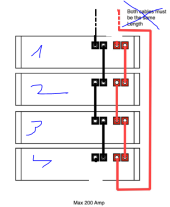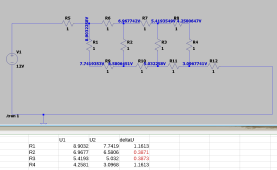Luxpower_Gilbert
Luxpert @Luxpower USA Team
This is their distributors website
 www.sunsynk.org
www.sunsynk.org
Distributors | Sunsynk
 www.sunsynk.org
www.sunsynk.org
 www.sunsynk.org
www.sunsynk.org
CorrectI believe the Growatt is 'off grid' and can't export?
Trueyour earth connection can be lost if the grid goes down?
Ah, I see. I have a black plastic tube that runs down the wall and into a black box that says something about 'earthing point', to the right of my inverter box. I will ask my electrician about this, he will remember.Correct
True
If your grids N/G bonding is done at the grid transformer. And not at your building.
You can't go wrong with those units.Ah, I see. I have a black plastic tube that runs down the wall and into a black box that says something about 'earthing point', to the right of my inverter box. I will ask my electrician about this, he will remember.
I think I will probably go for the Deye inverter, because everything I have seen on Youtube about the Sunsynk and Deye inverters has been good. It's a lot easier looking for a new inverter now, compared to six months ago, when I didn't have a clue about anything!
Maybe. Worldwide, less than 15% optimistically and maybe 5% 100% uptime of the land masses will support adequate wind most of the time. At the cost of a decent small wind turbine I’d just buy more panels- in fact I did. Which is humorous a bit because I’m <1/2mile from a ridge top with like 16 350’ tall wind turbines. That incidentally do not turn a surprising amount of the time while yet being an ‘ideal’ spot.wind turbine would really help in the Winter months
I searched all of those distributors, I couldn't find any that actually have Sunsynk products in stock on their website, available to buy for members of the public. Most of them don't have any mention of 'SunSynk' on their sites at all. Dragons Breath has the 8kW SunSynk Ecco, for way too much for me to consider: £3,488.00 (Exc. VAT) - £4,185.60 - Inc. Vat. And then it says "THIS ITEM IS SUBJECT TO STOCK AVAILABILITY". For that money I would just go for Victron anyway.
Can you use a SunSynk inverter on your system? The Canadian Solar 595W panels have a Short Circuit Current (Isc) of 18.42 A while the SunSynk inverter has a Max. PV Isc of 17 A.Thanks for the link, kitkad, but they only do a 3.6kW inverter, I want an 8kW one.
Thanks for the link, kitkad, but I've decided against the SunSynk/Deye 8kW inverter - I can only afford one at the moment, and this would mean I would have to get a lot of extra battery cables and busbars to connect my three Pylontech US5000s to it, as I have two inverters at the moment, which are connected one to each end of my three batteries, using 100A cables. I would need to use twice as many 100A Pylontech cables to take the potential 160A of current from my batteries when they are supplying large (over 5kW) loads in my house.
I want to set up a third string of solar panels later this year, but I would need another 8kW SunSynk/Deye inverter at £2,368, to plug them into. If I go with Growatt SPF5000ES inverters, I only need to spend £1,295 to get another one for my third string.
You need to get busbars. Connect all batteries to the busbars then connect all inverters to the busbars.Thanks for the link, kitkad, but I've decided against the SunSynk/Deye 8kW inverter - I can only afford one at the moment, and this would mean I would have to get a lot of extra battery cables and busbars to connect my three Pylontech US5000s to it, as I have two inverters at the moment, which are connected one to each end of my three batteries, using 100A cables. I would need to use twice as many 100A Pylontech cables to take the potential 160A of current from my batteries when they are supplying large (over 5kW) loads in my house.
I want to set up a third string of solar panels later this year, but I would need another 8kW SunSynk/Deye inverter at £2,368, to plug them into. If I go with Growatt SPF5000ES inverters, I only need to spend £1,295 to get another one for my third string.
If you want to daisy chain them like that then connect the inverter cables at opposite ends. If you connect to multiple inverters then you'll either have to get creative with your connection points (with two inverters and 3 daisy chained batteries then you can connect one inverter to the top and one to the bottom) or you'll want to add busbars.View attachment 129133This is what the SunSynk manual recommends (the lower right diagram, 'Max 200 Amp') for connecting multiple batteries (I have three 5kWh ones) to the 8kW Sunsynk. I've asked my electrician about it.

What happens to the two middle batteries? Why not balance them?Ohmic law

My point was you CAN wire them balanced in two ways I can think of atm. So that’s the way they should be wired- balanced.When You use schematics, which I draw in my previous comment, it will work OK. But two middle batteries will be used with slightly less power due to ohmic law.
Exactly.have seen slightly less voltage on cells connected in middle of the wires.


